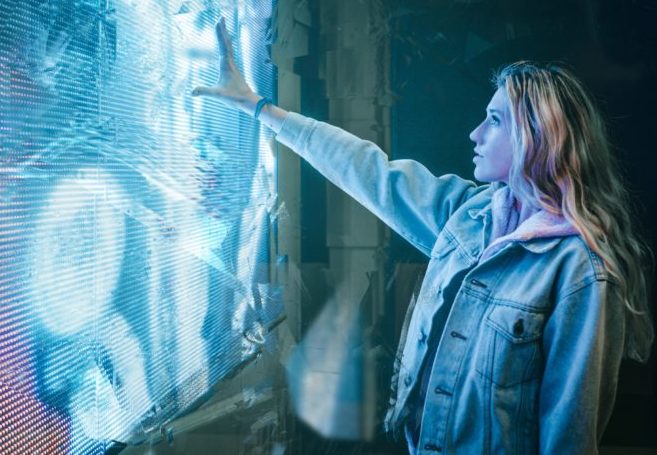Originally published in Event Industry News
By David Levin
For generations, the in-person event experience was pretty much unchanged.
Easels, poster board and other forms of paper signage were the standard ways hotel and event venues handled on-site communication. In the last 15 years, venues started leveraging digital reader boards, meeting room signage and interactive kiosks, but even with that technology, hotel staff rarely changed the content, leaving the true potential of that prime digital real estate unfulfilled.
That’s changing, thanks to new technology. Almost every major full-service hotel and event center already has screens, helping displace the need for paper signage. And now, with advanced, intuitive content management tools, venues are realizing that the screens they already have can play a bigger role in the overall event experience.
So, what used to be a static reader board can now be a connected, customized, real-time part of the event experience, capable of extending everything that attendees see and do on-site into part of a much larger, more all-encompassing event production. And the same can be said for other standard hotel digital signage applications like meeting room signs and wayfinding signage.
Think about the possibilities.
Because event staff can update digital signage on the fly via their mobile devices, they can pull in new content via the cloud, rotating out messaging based on time of day or the sessions going on in the area.
Things that previously, at the very least, required a trip back to a desktop or laptop, along with lag time as materials were uploaded into the system and scheduled to deploy, can now be managed on-site and in real-time, saving both staff time and effort while delivering content experiences that are much more immersive and customizable for attendees.
For instance, at the Marriott Marquis in the middle of Midtown Manhattan, the digital signage system is completely integrated. That means that staff members can select which floors they want certain content to show up on, or even do a full takeover on all floors, all by simply selecting a checkbox on an app and uploading a playlist of content.
Think about what that level of content customization means for event attendees—it puts the focus on them and the event they’re attending. It makes the entire event more immersive. And it’s easy to do.
But instead of diving into every way you can customize your property’s signage to maximize event impact, let’s narrow the focus and just look at reader boards. Because if a reader board can display more than what you’re used to seeing it display, it’s easy to imagine how the rest of your property’s signage can be easily customized to provide more value to event planners and their attendees.
With the ability to immediately replace reader board information with customized, event-specific content—everything from video sizzle reels through session-specific content—you can differentiate your venue, winning more event business by giving event planners what they want: more immersive events. So, when you’re looking to provide more “wow factor” opportunities for event planners to take advantage of, start with your reader boards.
Relevancy wins:
When content is easier to swap out and schedule on the fly, it’s easier to ensure your screens always display relevant, event-specific content. Imagine walking out of a conference session and seeing content displayed on reader boards that’s related to the session you just left.
It’s a way to reinforce key takeaways, highlight additional resources and more. It’s also fresh and unique because not many other properties are using their reader boards this way. Things like video clips of keynote speakers, upcoming events, social media interactions and thank you messages are the types of moments of exclusivity that resonate with event attendees.
Content Accuracy Matters:
As impressed as guests are by digital signage when it provides content that’s tailored to them, they’re also quick to notice when something isn’t right. Maybe the messaging is outdated or simply isn’t applicable. With modern content management tools, catering and event staff can make updates as soon as an error is noticed—directly from the floor, without needing to go back to their desks.
Make event planners happy:
It’s about more than just attendees, too. A happy event planner is more likely to come back to your property, and nothing makes planners happier than technology that enhances the event experience. Imagine their surprise when, instead of a drawn-out content management process, they can email a visual to a catering and events team member, have it uploaded to the cloud right as they’re standing in front of the screen and see the content play within seconds. That’s a “wow” experience for any event planner, and it’s the kind of seamless functionality that leads to repeat bookings and long-term relationships.
Every event is a workout for the catering and event staff—running back to their desks to check schedules, manage services and ensure that everything is going smoothly for their clients. The best teams, however, are those that are able to be on-site throughout the event, constantly scanning the space to make sure everything is right, the signage is working, the food service is on time, the attendees are enjoying themselves, etc.
An event is a live production and the sales and catering staff are the producers of the show.
Next-generation, mobile-friendly content management tools help event staff do it all, seamlessly, by keeping them on-site and in the moment. And when a reader board or meeting room sign needs to be updated, they can handle it on the fly.
When that happens, everyone wins. Attendees get a richer, more immersive experience. Planners get an event that goes off without a hitch. And hotel event staff build stronger relationships that lead to repeat business down the road.
Who knew those static reader boards could be so powerful?
David Levin is chief executive of Four Winds Interactive.

